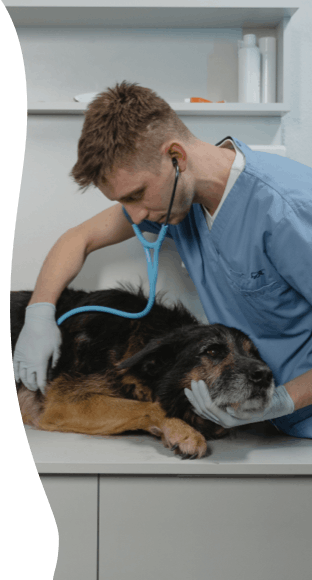How to Treat Black Fly Bites on Dogs
What are Fly Bites?
Flies prey on the dog's ears and sometimes bridge of their nose for the tender skin here and the inability of the dog to protect this area. Similarly, the rump area is often a target. In severe infestations, the dogs can develop a secondary infection. The flies may lay their eggs in the open wound they created or any open wound they find. In cases such as this, the dog often has to be anesthetized and the wound cleaned of maggots and dead skin by a veterinarian.
Fly biting often affects dogs that work on farms or live in a primarily outdoor environment. Small breed dogs and cats are rarely affected. Dogs who do not live entirely out of doors are less likely to affected. Dogs with upright ears, who are also most commonly working dogs, such as German Shepherds and Collies are the most afflicted.
Vet bills can sneak up on you.
Plan ahead. Get the pawfect insurance plan for your pup.
Compare plans

Fly Bites Average Cost
From 296 quotes ranging from $200 - $800
Average Cost $400
Symptoms of Fly Bites in Dogs
If you see flies on or near your pet it is quite likely that fly bites are occurring. To diagnose after the event, on the ears especially, the edges will have small red bumps that are dark and crusty and sometimes bleed.
- Itching
- Redness on skin
- Bumps on the skin
- Bites that may bleed or crust over
- Bite wounds
- Presence of flies in the fur
Types
- Stable fly
- Horse fly
- Black fly
- Mosquitoes
- Sand flies
- Biting midges (no-see-ums)
Top
Causes of Fly Bites in Dogs
- Flies are parasitic and are attracted to warm-blooded mammals for a fresh meal
- The flies may also choose to lay their eggs in an open wound
- Matted fecal matter in the dog's coat may attract flies
- Unclean kennel areas exacerbate the problem
- Horse or farm animal stables in close proximity to the dog's quarters can lead to fly strike
Top
Diagnosis of Fly Bites in Dogs
If you see that your companion is suffering from multiple bites, a veterinarian visit may be warranted. Secondary infection can be a complication with an over abundance of fly bites. In addition, if your pet has open wounds, certain species of flies may cause a botfly infestation or other parasitic infection. Severe infestations, when maggots are present, are known as myiasis or fly strike.
Diagnosis can be made by your veterinarian by inspection of the bite. Most characteristically the ears, especially the edges, will be affected. They will appear sore and sometimes crusty with blood.
Top
Treatment of Fly Bites in Dogs
Prevention is the best treatment for fly biting in dogs. Flies are attracted to decaying matter, urine, feces, and standing water. Keeping your pet's kennel and nearby areas free from leaves, grass clippings, uneaten food, and fecal matter of any kind will help. It is also important to keep your dog well groomed. Regular bathing and if necessary, clipping to rid your dog of matted fur can make a big difference. Bring your dog inside during peak fly times. Better yet, give even working dogs time inside of the home.
If an infestation has occurred but is not too severe, home remedies may be applied. Because of the sensitive nature of the ears, delicate care is needed. Gently clean the affected area with warm water and a mild soap. It is best to keep the dog inside as much as possible while the wounds heal. When the dog is outside protect the ears with a petroleum product. Neosporin is most recommended. Commercial pyrethrin products can be used to deter pests. Some people add an insecticide or deet to the petroleum product that serves as a barrier for future insect bites. You may also consider spraying your dog's kennel area to further deter pests. A bug zapper will help with most flies except mosquitoes. Fly tape hung high enough to not get tangled in your dog's fur can aid.
If the infestation is severe, especially if maggots are present, veterinarian help is needed. Because the procedure is very painful most veterinarians will recommend that the dog is anesthetized while they remedy the affected area.
Top
Recovery of Fly Bites in Dogs
Prognosis is generally good unless a maggot infestation is severe. In this case, the ears may experience scarring and remain thickened. Otherwise, cleaning up the kennel or stable area brings good resolution. Reinfestation is easy if a desirable fly habitat reoccurs near the dog's kennel area. Tidy homestead practices can keep trouble at bay.
Top
*Wag! may collect a share of sales or other compensation from the links on this page. Items are sold by the retailer, not Wag!.
How to Treat Black Fly Bites on Dogs
Source: https://wagwalking.com/condition/fly-bites#:~:text=Gently%20clean%20the%20affected%20area,Neosporin%20is%20most%20recommended.